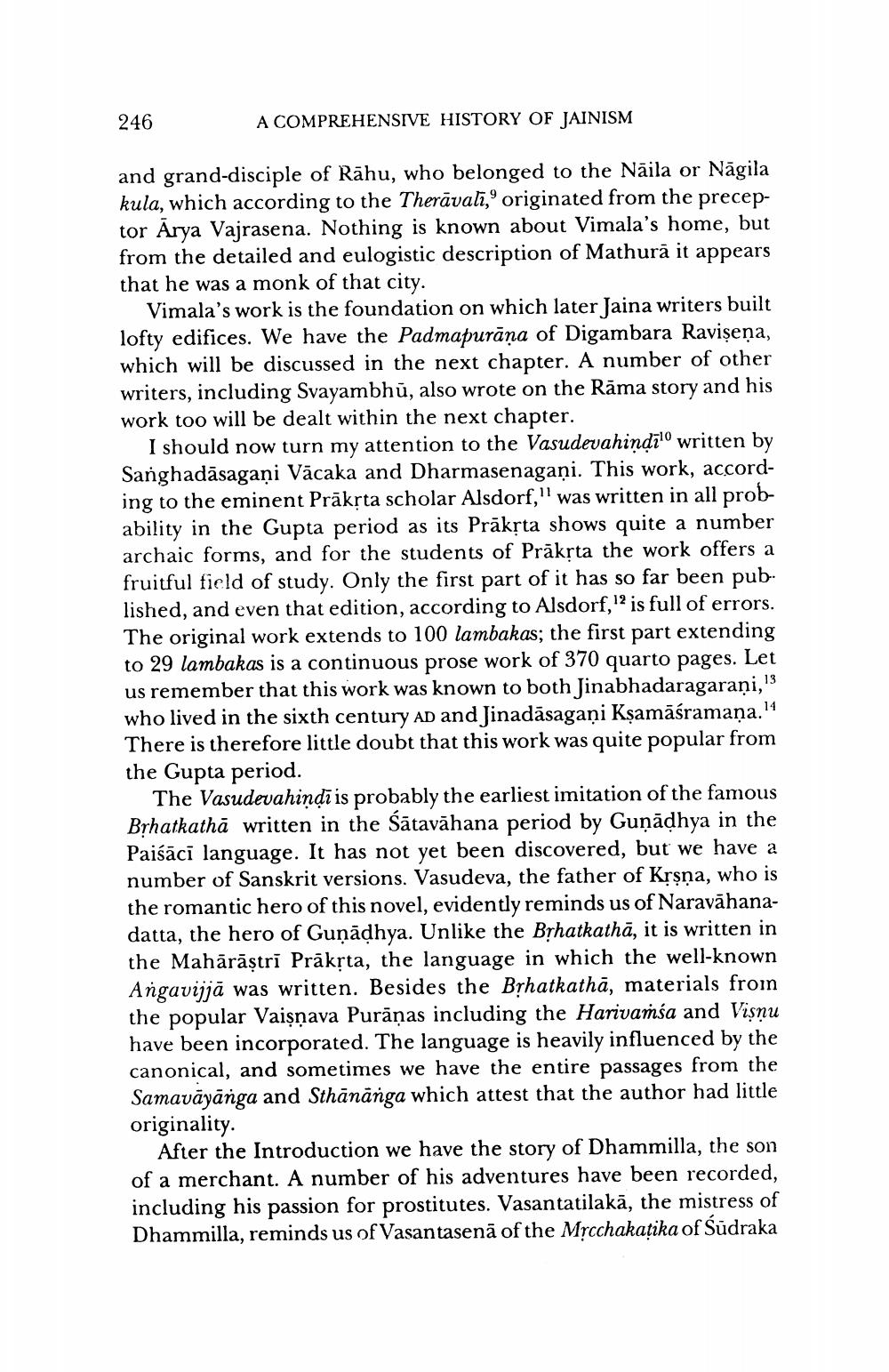________________
246
A COMPREHENSIVE HISTORY OF JAINISM
and grand-disciple of Rāhu, who belonged to the Naila or Nāgila kula, which according to the Theravali, originated from the preceptor Arya Vajrasena. Nothing is known about Vimala's home, but from the detailed and eulogistic description of Mathurā it appears that he was a monk of that city.
Vimala's work is the foundation on which later Jaina writers built lofty edifices. We have the Padmapurana of Digambara Ravisena, which will be discussed in the next chapter. A number of other writers, including Svayambhū, also wrote on the Rāma story and his work too will be dealt within the next chapter.
I should now turn my attention to the Vasudevahindīle written by Sanghadāsagani Vācaka and Dharmasenagaại. This work, according to the eminent Prāksta scholar Alsdorf," was written in all probability in the Gupta period as its Prākrta shows quite a number archaic forms, and for the students of Prākrta the work offers a fruitful field of study. Only the first part of it has so far been pub. lished, and even that edition, according to Alsdorf, is full of errors. The original work extends to 100 lambakas; the first part extending to 29 lambakas is a continuous prose work of 370 quarto pages. Let us remember that this work was known to both Jinabhadaragarani,13 who lived in the sixth century AD and Jinadāsagani Kșamāśramaņa.14 There is therefore little doubt that this work was quite popular from the Gupta period.
The Vasudevahindī is probably the earliest imitation of the famous Byhatkathā written in the Sātavāhana period by Guņādhya in the Paiśācī language. It has not yet been discovered, but we have a number of Sanskrit versions. Vasudeva, the father of Krsna, who is the romantic hero of this novel, evidently reminds us of Naravāhanadatta, the hero of Guņādhya. Unlike the Bịhatkathā, it is written in the Mahārāstri Prakrta, the language in which the well-known Angavijjā was written. Besides the Byhatkathā, materials from the popular Vaisnava Purānas including the Harivarśa and Vişnu have been incorporated. The language is heavily influenced by the canonical, and sometimes we have the entire passages from the Samavāyānga and Sthānanga which attest that the author had little originality.
After the Introduction we have the story of Dhammilla, the son of a merchant. A number of his adventures have been recorded, including his passion for prostitutes. Vasantatilakā, the mistress of Dhammilla, reminds us of Vasantasena of the Mrcchakatika of Südraka




